Funky Fantasy (ファンキーファンタジー), released 12/13/1996, developed by Yoshimoto Kogyo
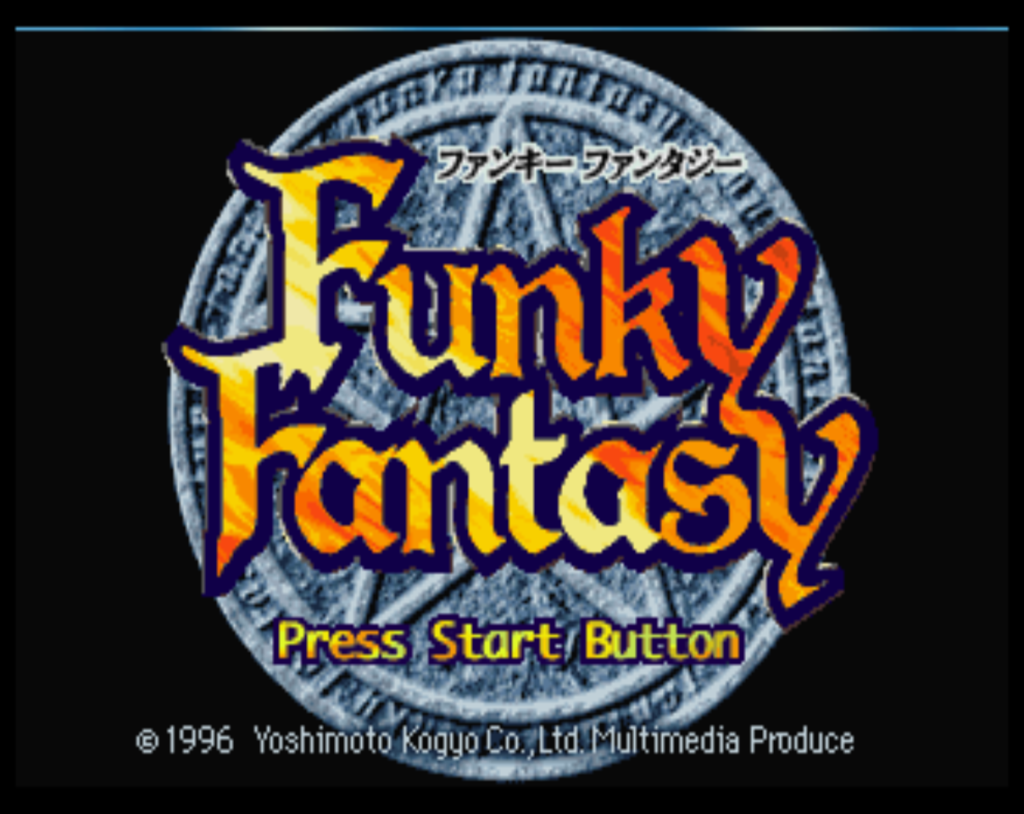
It’s hard to know what to expect with a game called Funky Fantasy, and when you see the character designs it doesn’t inspire confidence:
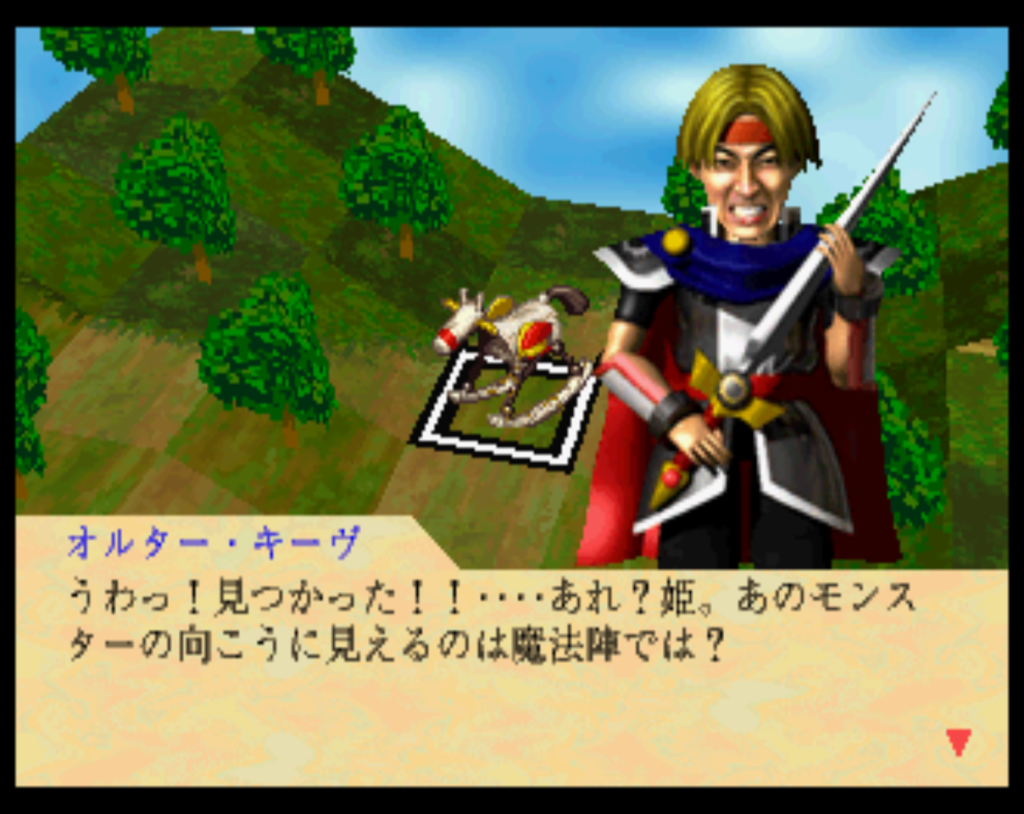
The game was developed by Yoshimoto Kogyo,a large media conglomerate that manages mostly comedians and comedy groups, although they’ve been branching out in recent years. All of the characters in this game have faces of comedians or entertainers that were managed by the company at the time — I have no idea how popular or well-known the people were at the time (or still are).
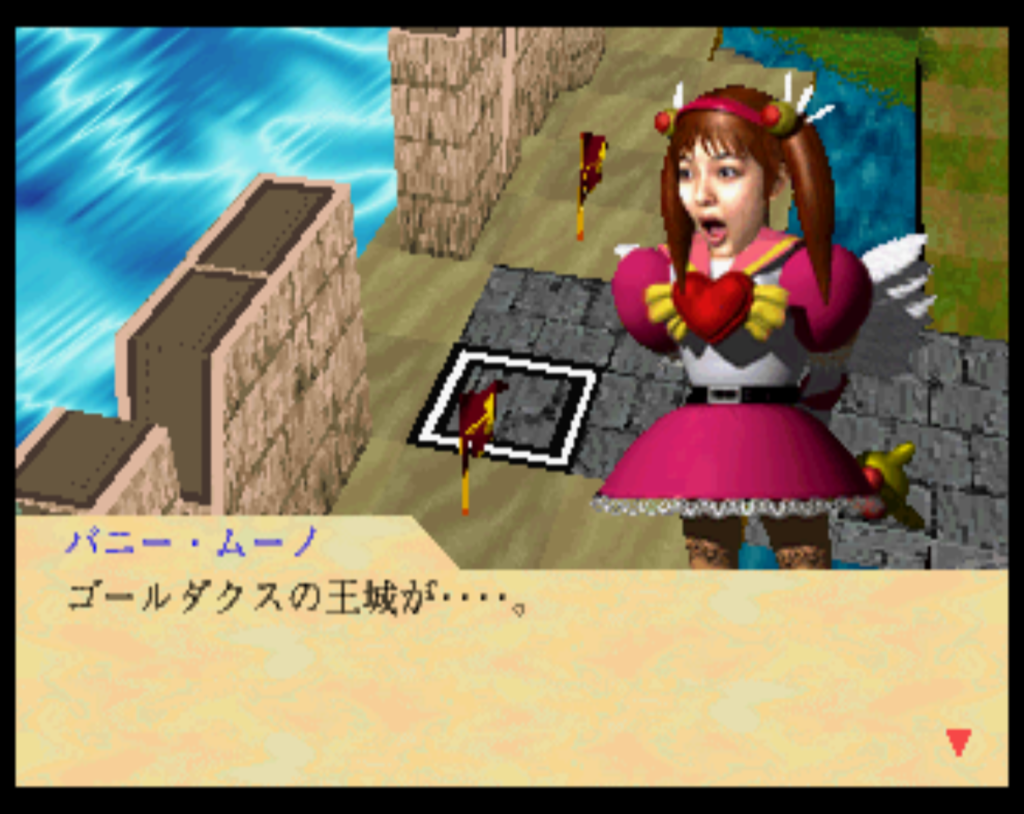
The story is basically a string of parodies, cliches, and gags — the princess Bunny Muno (above) has lost her kingdom and has to gain allies and fight to get it back; that’s pretty much the whole story — even the few twists or developments are just parodies. The game is also pretty short, with only 16 stages. The parodies draw from a wide range of sources, and there are probably a lot I missed. I noticed Gundam, Sailor Moon, Evangelion, Dragon Quest, Ninja Hattori, and even Sakura Taisen and Langrisser:
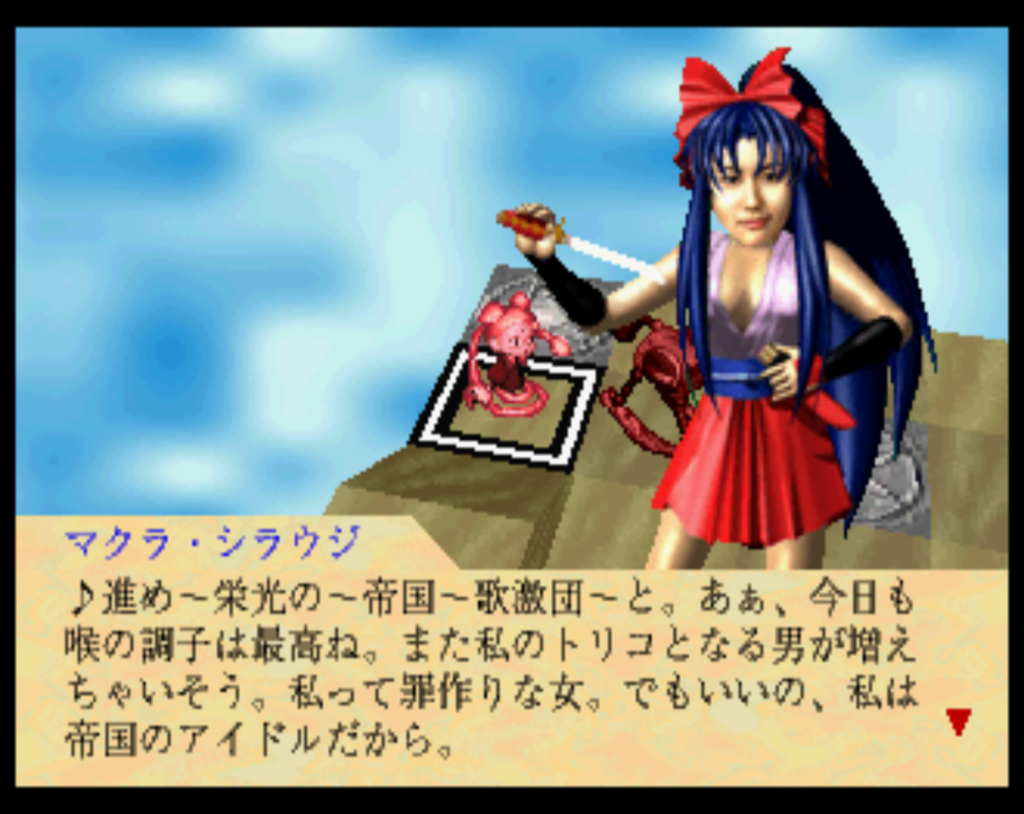
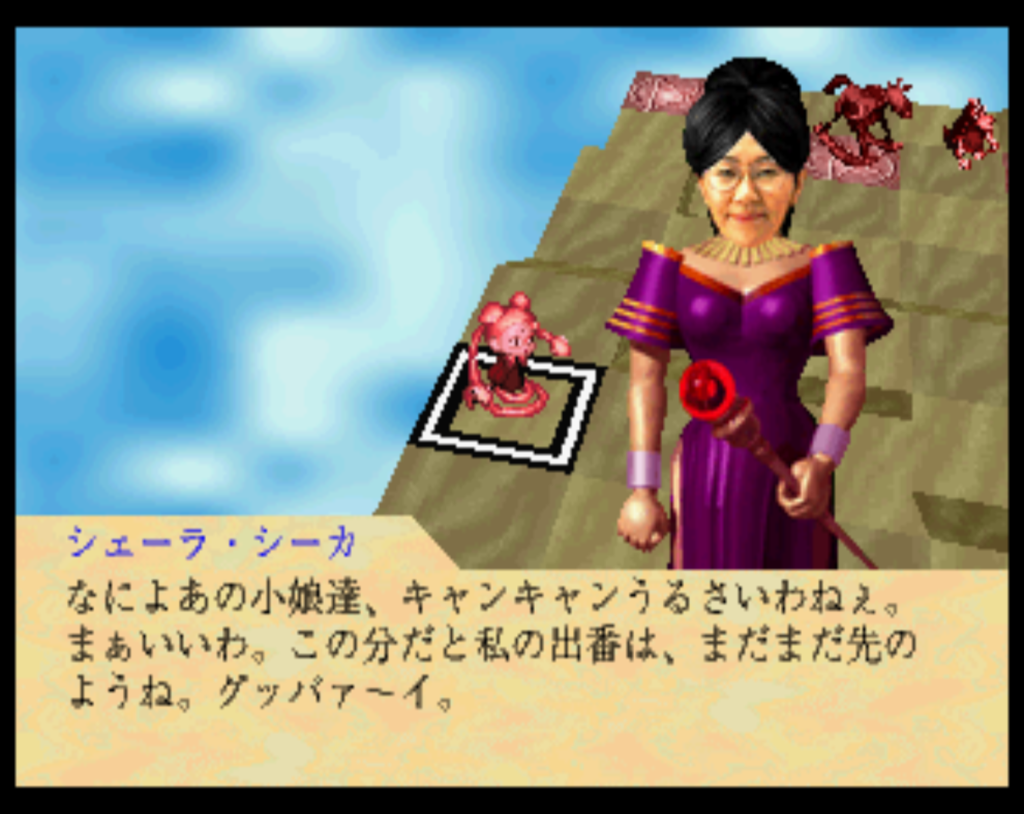
So we have a game produced by a comedy entertainment company, using weird character designs and a plot mostly centered on gags and parodies. Surely this must be a terrible game? Well….no. I can’t say that it’s particularly good, but the designers didn’t just copy other SRPGs. There are a lot of new gameplay elements and innovative features. I wonder if the non-traditional background of this game gave it both potential and ultimate disappointment — the fact that this wasn’t a major game development studio allowed them to avoid simply making a clone of other SRPGs, but they didn’t have enough experienced staff to actually implement their ideas in a balanced and satisfying manner. This is just a guess, though.
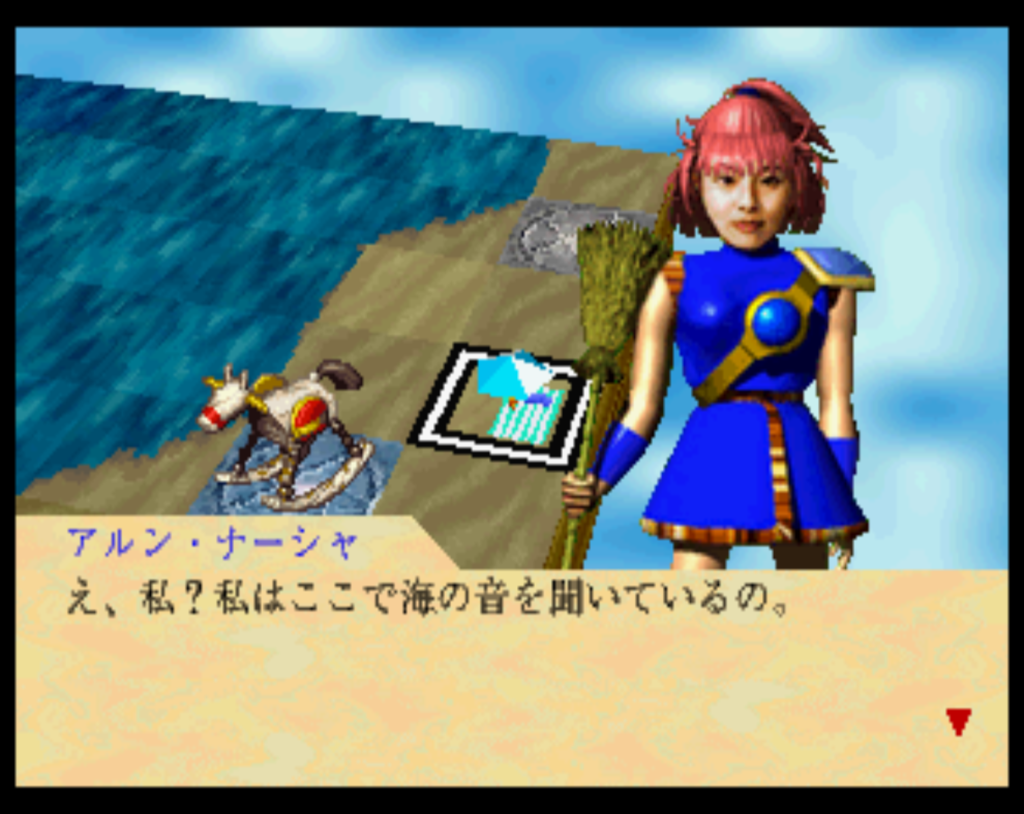
The rocking horse thing there is the White Base parody, your main ship. Bunny controls it and is a summoner. The way you get your people on the board is to combine them with monster types and send them out.
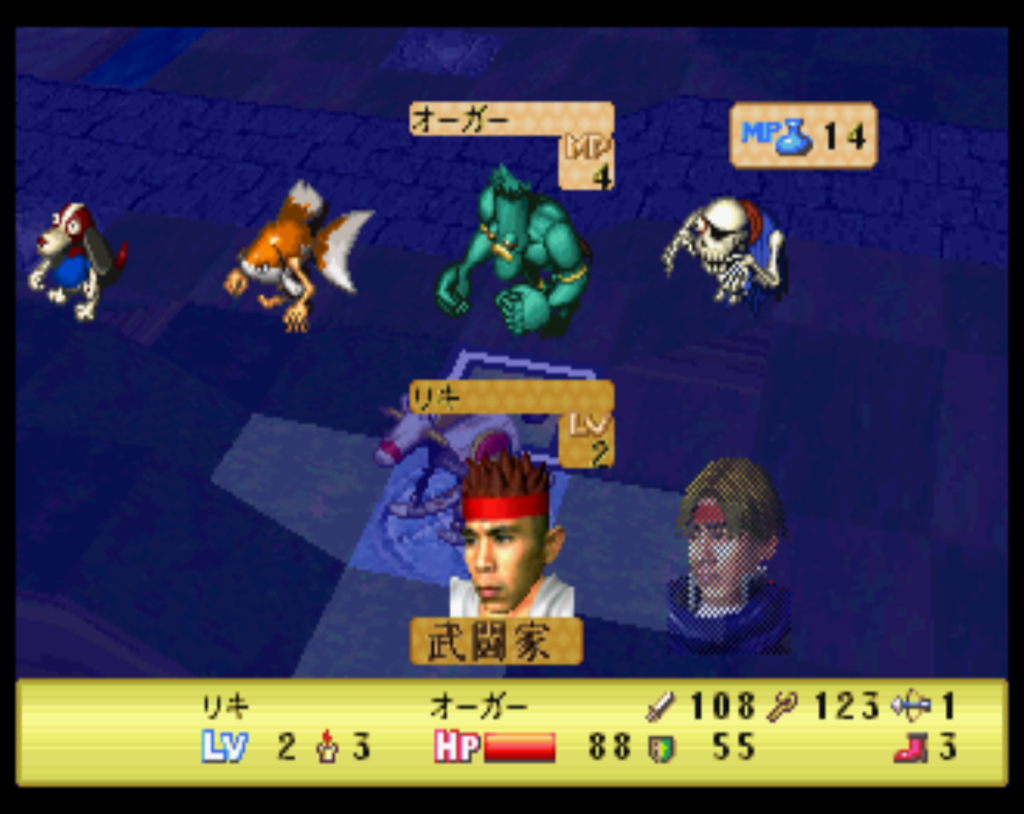
Each character has a class (with a promotion at level 10). The combination of the character and the monster will produce different skills — for instance if you combine a Ninja with a Centaur Lord, the unit will have the Steal skill from the Ninja class, as well as a ranged attack from the Centaur Lord. The stats of the unit will be a combination of the character and the monster.
If a unit is defeated in battle, they can be re-summoned as long as they have life points remaining (the candle on the picture above). However, summoning costs MP, and the higher level the monster, the more MP it costs. You gain MP every turn, 2 MP for each of the magic circle pentagrams you control on the board. You gain control of a circle by moving any unit onto it, and it will then remain under your control until an enemy unit goes on it.
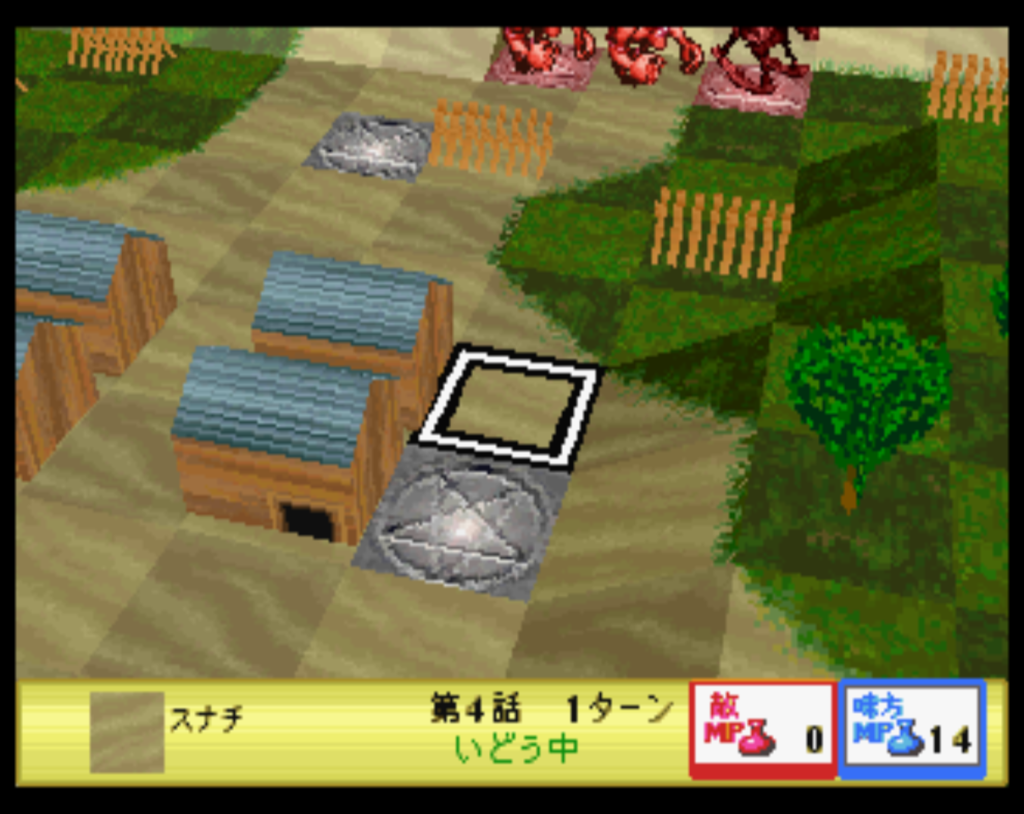
The enemy often has a summoner as well, and so they’ll be trying to capture the magic circles as well. If there are named units on the enemy side they will also have life points — often the goal of a map is to either reduce someone’s life points to 0, or kill their summoner and then kill them. However, the enemy summoners can bring out an unlimited number of grunt units; they still cost MP but don’t have life candles. This is one area I thought they made a mistake on in the game; too often it’s impossible to actually reach the summoner because they can just keep pumping out endless numbers of units, and it’s difficult to actually advance and make progress in the stage.
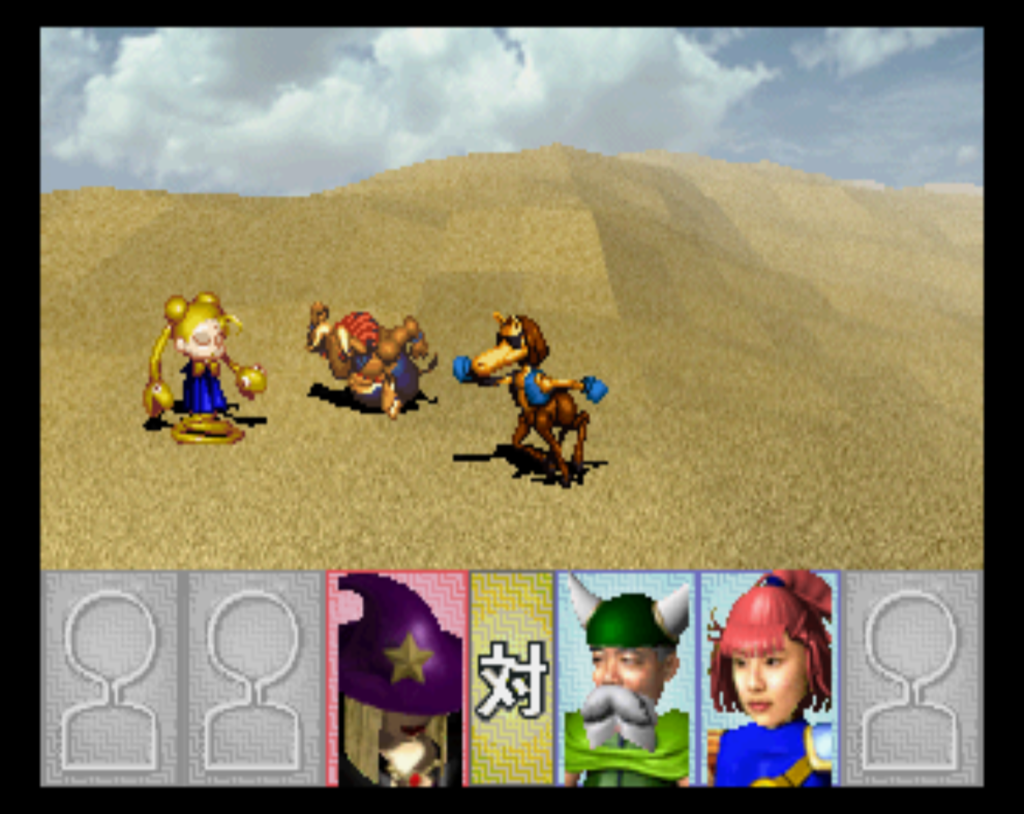
When you make an attack, the units to the left and right of the attacker, and left and right of the defender, all participate (up to 6 units total). Confusingly it’s not 3 vs 3 but can be 5 vs. 1 or 4 vs 2 as well, despite what the picture might look like above. Characters on the attacking side can participate in the attack even if they have already used their turn to do something else (like shooting, casting a spell, whatever).
I think that if this were the entire game, it would be quite difficult due to the unbalanced nature of the enemy ability to do unlimited summons. However, there is one more aspect to the game — the card system.
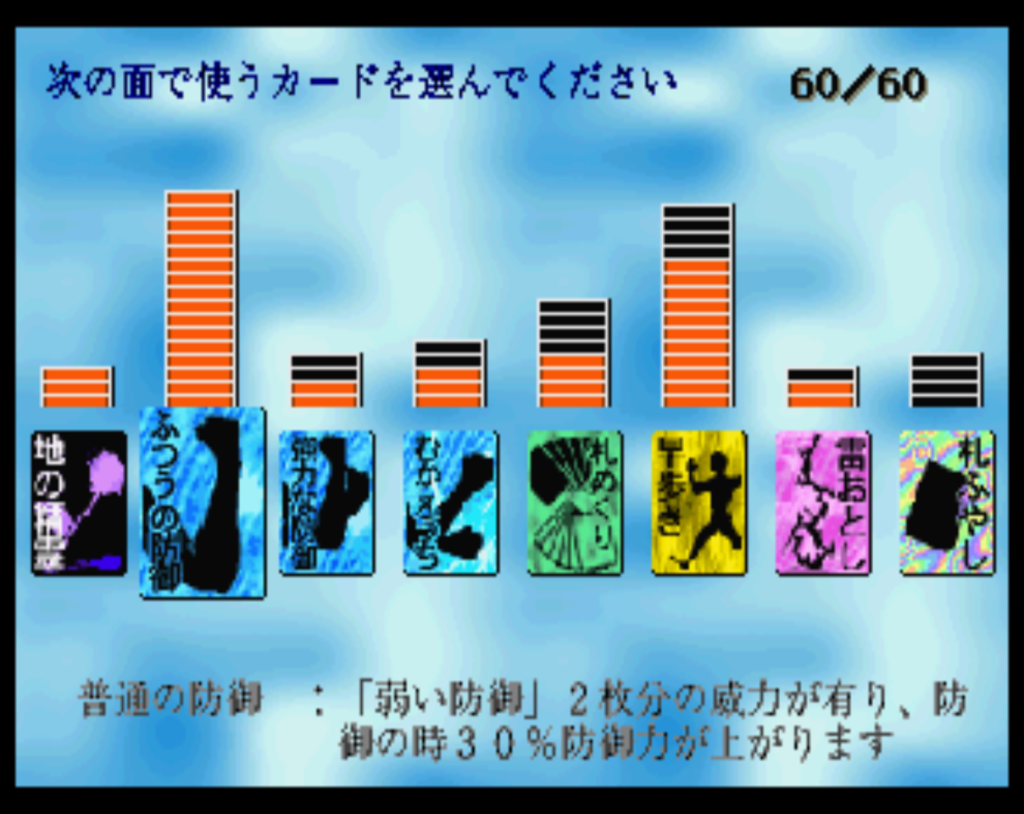
Before each battle, you form a deck of 60 cards from your total stock of cards. These cards include ones that increase your attack for the battle, increase defense, do damage to enemy units, increase movement speed, steal cards, and others. Using the cards during the stage does not permanently use them up; they’ll still be in your stock when you make your deck for the next stage. The enemy also has a deck of cards. Each turn the side will draw 2 cards from their deck.
You can use as many cards as you want on a turn or before a battle. Often when you have your first encounter with the enemy, they’ll unload all their attack cards on you, making it basically impossible to win unless you have an “absolute defense” card.
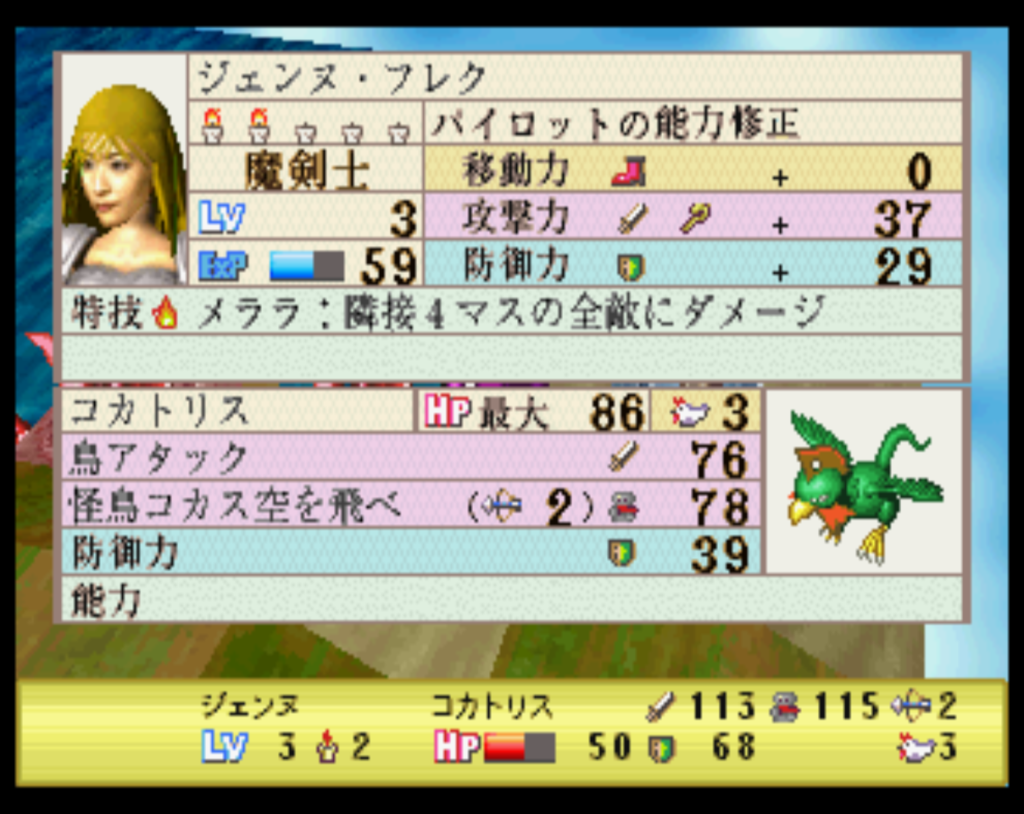
Between stages you can buy cards for your stock, as well as weapons and armor for your characters. Eventually I sunk most or all of my money into damage dealing cards, which I think are the best way to get through the later stages.
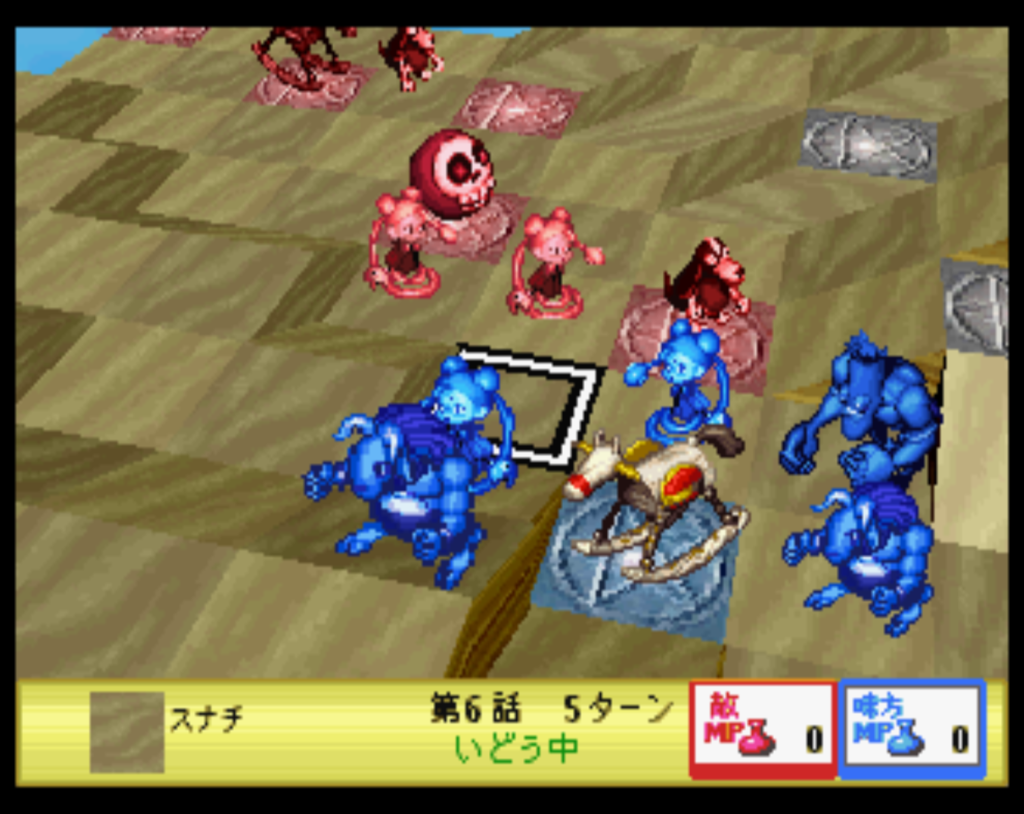
I found this game quite difficult in the beginning until I learned some of the peculiarities of how the system worked. Stage 5 is a big wall because there’s this Kraken that you can barely hurt; you need to figure out cards and magic by this point.
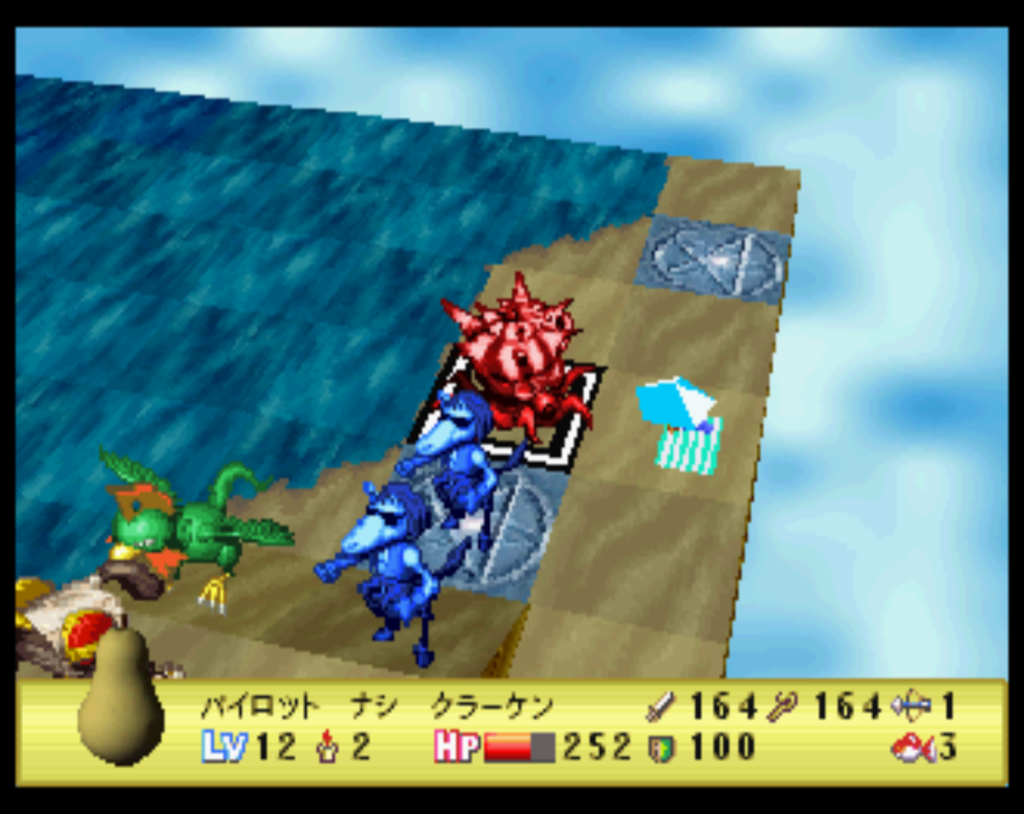
Even afterwards, the game remained fairly challenging until the last 5 stages or so when I could make a deck that was 2/3 damage dealing and “draw more cards” cards. I would then rely primarily on those cards to hurt the bosses, along with fire spells and ranged attacks. I don’t think I did any regular attacks after stage 10. For units, I thought the most useful were the Ninja (who can steal enemy cards) and the spellcasters. The best monster was the Centaur Lord because of its 5 range attack.
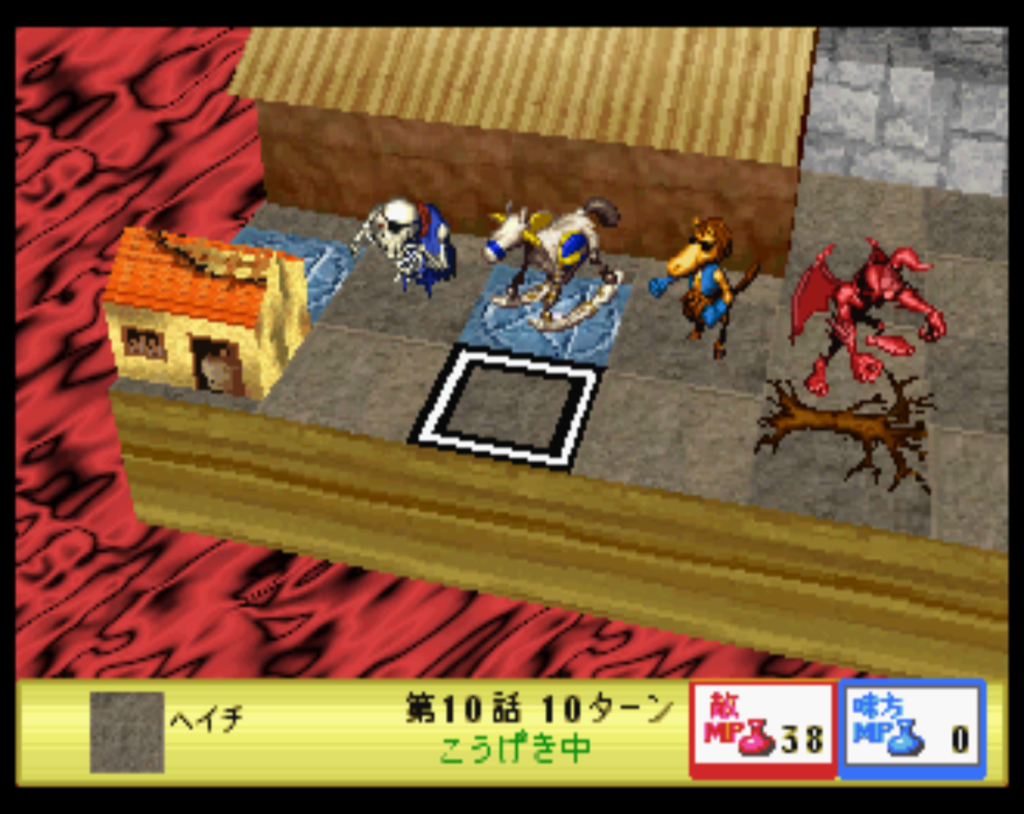
There were some elements of the system that I never fully understood. Sometimes I could not use my spells or abilities and I wasn’t entirely sure why.

So in the end I can’t really say this is a good game, but at least it tried something new. I would have liked to see a followup that refined the system, but there was never a sequel and I don’t think Yoshimoto Kogyo made any more strategy games.
I’ve been anticipating this article for awhile now. This game looks like it was made on drugs, and I sorta like that.